Basal cell of origin resolves neuroendocrine-tuft lineage plasticity in cancer
- PMID: 40963028
- PMCID: PMC12589105
- DOI: 10.1038/s41586-025-09503-z
Basal cell of origin resolves neuroendocrine-tuft lineage plasticity in cancer
Abstract
Neuroendocrine and tuft cells are rare chemosensory epithelial lineages defined by the expression of ASCL1 and POU2F3 transcription factors, respectively. Neuroendocrine cancers, including small cell lung cancer (SCLC), frequently display tuft-like subsets, a feature linked to poor patient outcomes1-9. The mechanisms driving neuroendocrine-tuft tumour heterogeneity and the origins of tuft-like cancers are unknown. Using multiple genetically engineered animal models of SCLC, we demonstrate that a basal cell of origin (but not the accepted neuroendocrine origin) generates neuroendocrine-tuft-like tumours that highly recapitulate human SCLC. Single-cell clonal analyses of basal-derived SCLC further uncovered unexpected transcriptional states, including an Atoh1+ state, and lineage trajectories underlying neuroendocrine-tuft plasticity. Uniquely in basal cells, the introduction of genetic alterations enriched in human tuft-like SCLC, including high MYC, PTEN loss and ASCL1 suppression, cooperates to promote tuft-like tumours. Transcriptomics of 944 human SCLCs revealed a basal-like subset and a tuft-ionocyte-like state that altogether demonstrate notable conservation between cancer states and normal basal cell injury response mechanisms10-13. Together, these data indicate that the basal cell is a probable origin for SCLC and other neuroendocrine-tuft cancers that can explain neuroendocrine-tuft heterogeneity, offering new insights for targeting lineage plasticity.
© 2025. The Author(s).
Conflict of interest statement
Competing interests: T.G.O. has a patent related to SCLC subtypes (US12188095-B2), a sponsored research agreement with Auron Therapeutics, has consulted for Nuage Therapeutics and Light Horse Therapeutics and served on the Scientific Advisory Board (SAB) for Lung Cancer Research Foundation and as a consulting editor for Cancer Research and Genes & Development. C.M.R. has consulted regarding oncology drug development with AbbVie, Amgen, AstraZeneca, Boehringer Ingelheim and Jazz, and receives licencing fees for DLL3-directed therapies. He serves on the SABs of Auron Therapeutics, DISCO, EARLI and Harpoon Therapeutics. A.D. serves on SABs for Jazz, AstraZeneca and Amgen. A.E. reports employment and stock options with Caris Life Sciences. J.M.C. has consulted for Sonata Therapeutics. A.T. received grants to the NCI from EMD Serono Research and Development, AstraZeneca, Gilead Sciences and ProLynx. J.C.M. has consulted for IQVIA, Genome Insights, Incyte, Novotech, Red Arrow Therapeutics, Pfizer, Vilya, Replimune and Iovance, and received honoraria from and advised for Caris Life Sciences. D.R.T. is on the SAB of Vrise Therapeutics. S.P. has consulted for Amgen, Bristol Myers Squibb, Daiichi Sankyo, Johnson & Johnson, Novocure, OncoHost and Takeda Pharmaceuticals. The other authors declare no competing interests. Diversity, equity, ethics, and inclusion: We included sex balance in the selection of human and non-human participants. One or more authors of this paper self-identify as people from sexual and gender minorities.
Figures
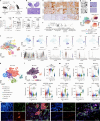




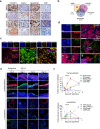
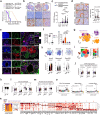
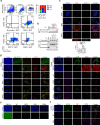




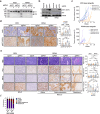



Update of
-
Basal cell of origin resolves neuroendocrine-tuft lineage plasticity in cancer.bioRxiv [Preprint]. 2024 Nov 15:2024.11.13.623500. doi: 10.1101/2024.11.13.623500. bioRxiv. 2024. Update in: Nature. 2025 Nov;647(8088):257-267. doi: 10.1038/s41586-025-09503-z. PMID: 39605338 Free PMC article. Updated. Preprint.
References
MeSH terms
Substances
Grants and funding
LinkOut - more resources
Full Text Sources
Medical
Research Materials

